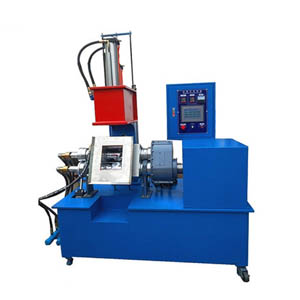Mixing Process In The Pharmaceutical Industry
Why Choose Us
Let’s Start Work Together
- +86-15976867748
- Contact@labkneader.com
- Gangkou Rd, Luo Yong Country, Xinhe, Wanjiang,DongGuan City,GuangDong,China
Drugs are often made from mang kinds of constituents. These constituents often pass through multiple processes to make the final product.
Blending/mixing process is one of these processes used in pharmaceuticals. Thus , blending/mixing is an important process in drug production. The blending process in pharmaceuticals is the process of physically combining two substances to create a mixture for final drugs.
Process equipment used in the healthcare industry follow strict requirement for accuracy, consistency and cleanliness. These regulations ensure that end products are safe, pure, and effective. particularly, mixing equipments which are commonly used in the production of pharmaceuticals and medical devices deal with a higher level of complexity because their use is more specialized.
Not one design fits all. Mixing process can meet with many objectives except simple combination of raw ingredients. These include producing fine emulsions, reducing particle size, carrying out chemical reactions, manipulating rheology, dissolving components, facilitating heat transfer, etc.
So even within a single pharmaceutical product line, it is not uncommon to employ a number of different style mixers to process raw ingredients, handle intermediates and prepare the finished product. What’s more, most pharmaceuticals rely highly on the technique.
Except the chemistry feature of formulation itself, the mixing operation has a decided influence on whether a drug will deliver the accurate dosage, have an acceptable appearance and texture, or be stable for the appropriate length of time. The importance of proper mixer selection and optimal operation can hardly be over-estimated. The main equipment used in the blending process is specialized pharmaceutical blenders or mixing machine.
This blending/mixing process in pharmaceutical industry usually involves loading the materials to be blended into the blender or mixer, and then waiting for minutes to complete the blending process.
Main equipment and function introduction: Horizontal ribbon mixer: Ribbon blenders are one kind of power blending mixer equipment ,it is very versatile and mainly used for blending/mixing powders and granules. This blending/mixing equipment consist of a U-shaped horizontal trough and 2 parts mounted on a central shaft . The ribbon agitator move materials both inwards and outwards in two directions, which ensure a homogenous mix. This ribbon mixer are widely used for mixing powder and powder, mixing a small amount of liquid powder. From experiment to production, complete specifications, high efficiency and high quality, customized equipment according to requirements.
Sigma kneader mixer:The most effective machine that is used for heavy-duty like mixing, grinding, etc, and is commonly used for high viscosity materials mixing.
Conveyor: Including pneumatic conveying (positive and negative pressure dense phase dilute phase) and mechanical conveying (spiral bucket pipe chain and belt).








